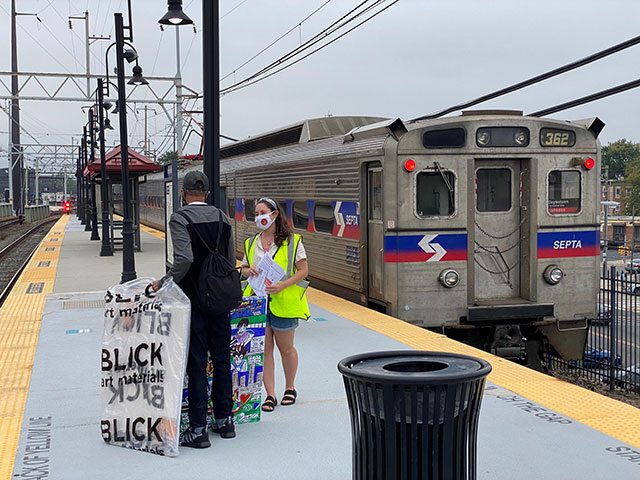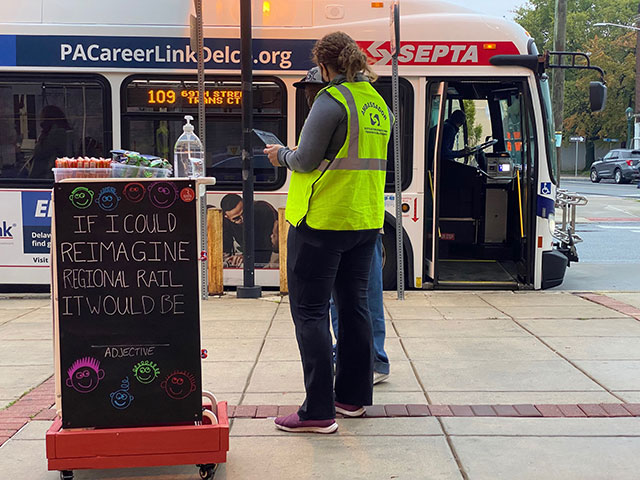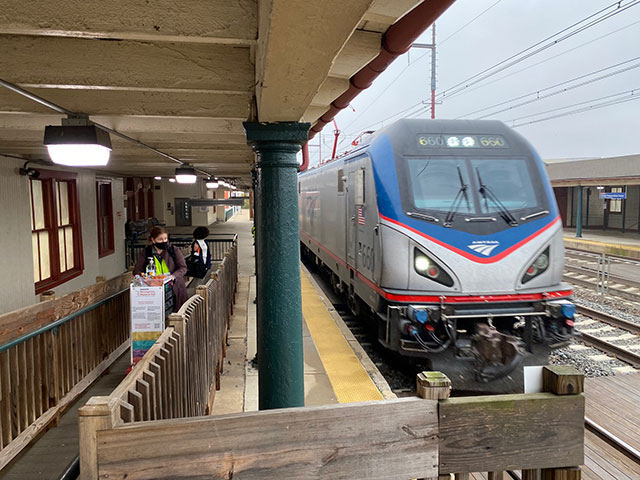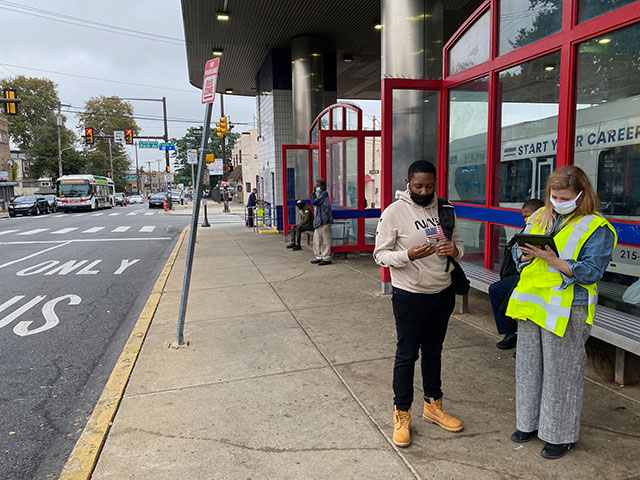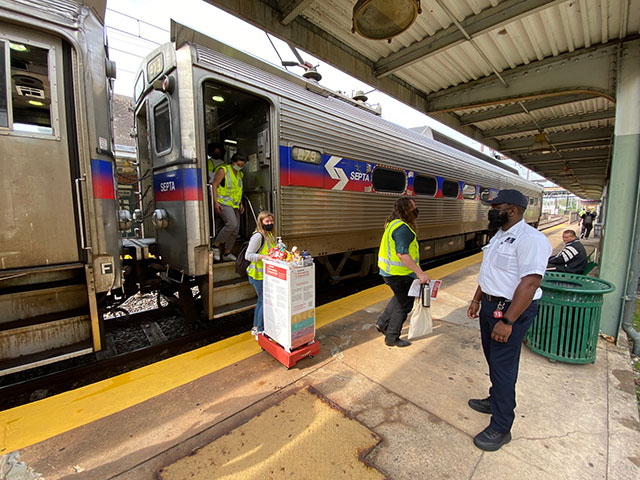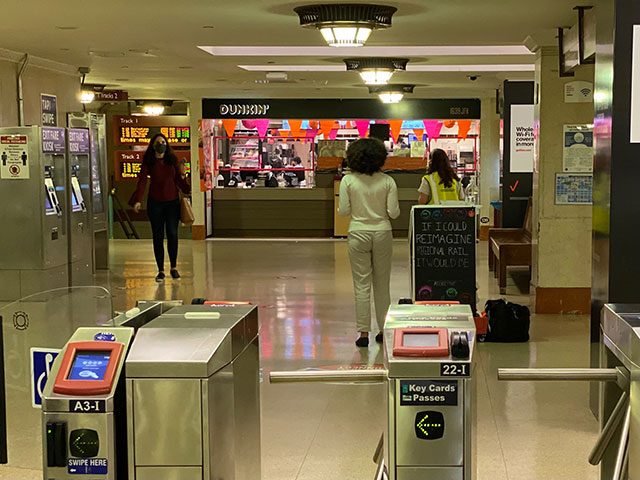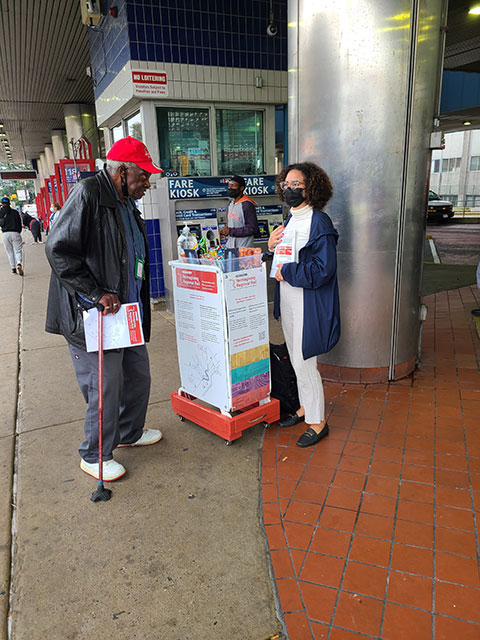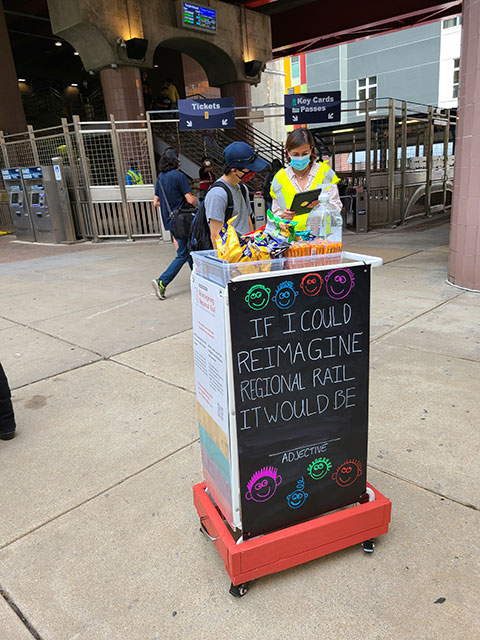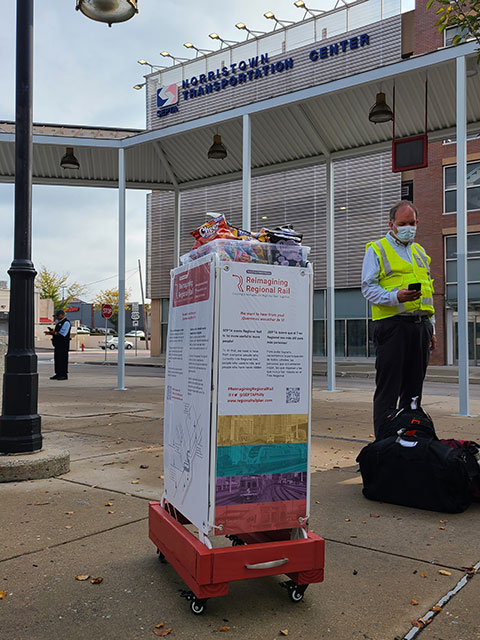06 Jan Selecting the (Power) Tools for Engagement
Setting up successful engagement requires finding the tools that are right for the task. At Connect the Dots we are always looking for new ways to engage with the public: online, in-person, and moving seamlessly between the two. So how do we determine what tactics are appropriate for a project? With careful consideration and collaboration, we build our processes to turn our engagement tools into power tools… and sometimes that involves actual power tools, like our Regional Rail outreach.
Tie Engagement Goals to Key Decision Points
Engagement can never be one-size-fits-all. The tools and tactics that worked for one project don’t always translate to the context of the next. So how do we decide what tactics are appropriate for different projects? We start by tying the project’s goals to the points where public input can support decision-making. The tools and tactics chosen are what connect our goals for engagement to the outcomes and answers we need.
For Regional Rail’s Phase One, we asked:
- What do we need to know?
- What does success look like?
- What are the tools & tactics that get us to success?
We needed to know why people choose to ride or not ride Regional Rail. We had some ideas from data and past work, but our data alone did not provide enough insight into the lived experience. We determined that we would ask these questions through a survey that we would promote using pop-up interactions. These were appropriate tools, since we were asking broad questions about personal experience; these could be answered briefly and don’t require education or knowledge-building to participate.
At CtD, we often conduct a workshop we call an On & Off the Table including the client team and involved consultants. This takes the project’s overarching goals and translates them into the key moments where public engagement and input can have a direct impact on outcomes. This creates intentionality for each phase of the project and gives us clear direction and metrics for success, so we typically recommend this at the project onset (especially for longer engagement processes) and refer back to the conversation when planning later phases.
Iterate & Innovate
Once we have determined what the appropriate tools are to gather our information, we look at the specific needs of the project to create a customized solution. We knew that we would be popping up along the train lines and using the Regional Rail system to move throughout the day. Our pop up materials needed to be portable, compact to fit on the train without becoming an impediment, eye-catching, and light enough to be carried up and down stairs at some of these locations.
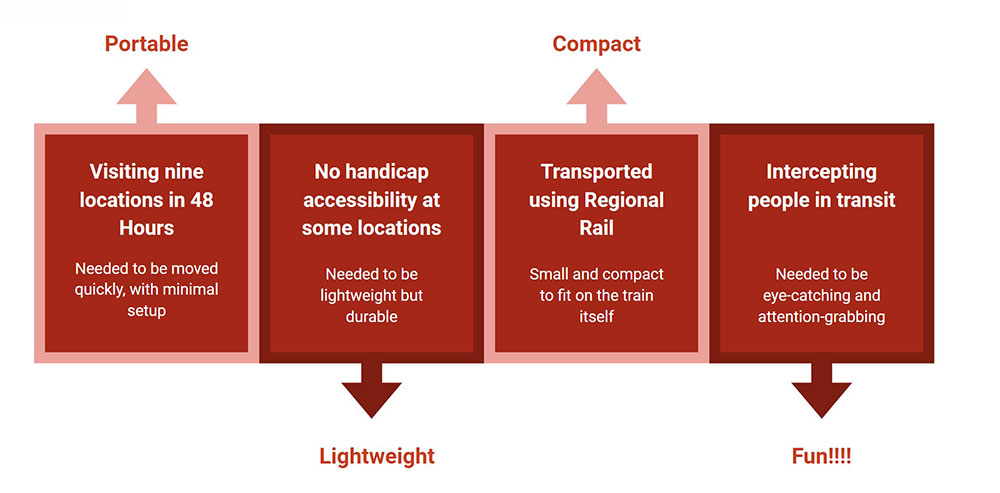
If you’ve ever had to carry a folding table for a pop-up, you already know that wasn’t going to be our ideal option. We thought about what solutions already exist that we could adjust to our needs, and were inspired particularly by the snack carts that are seen most often on Asian rail systems.
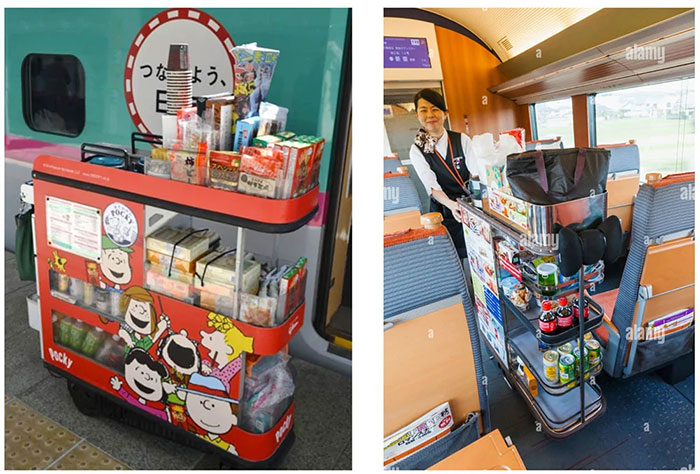
Of course nothing existed like this…but inspiration came in the form of an IKEA hack. As soon as we saw this cart we knew it was exactly the start we needed to build something that would work for a full day of engagement. The wheels weren’t going to cut it though, so that was how our engagement *power* tools came into play! Clad on three sides with informational posters (in both English and Spanish), the cart also allowed for the transportation of everything we would need for the events: handouts and stickers, hand sanitizer and masks, and the all-important snacks.
Use Early Data to Amplify Missing Voices
The team established our intention to support the survey data with these pop-ups. The survey was released several weeks prior to our planned pop-up dates, allowing the opportunity to find what areas were underrepresented by the survey data. We then used this early survey data to improve accessiblity. Since we wanted to speak to both riders and non-riders, we also included a popular bus depot close to a Regional Rail station as an outreach location.
The demographics for the two days of outreach increased the range in response location and respondent demographics. After the two days of pop ups, the survey responses shifted from 41% to 50% identifying as female, much closer to the actual ridership data.
Stretch the Reach
To promote the pop ups, SEPTA used their existing social media channels to further engagement. In addition to reaching over 2,000 individuals face to face, the pop ups were promoted to over 100,000 SEPTA followers on Instagram and Twitter. By taking in-person online, even areas that were not visited learned about the Regional Rail’s outreach efforts and hear about the virtual meeting that followed the pop-up events.
This was part of a concerted effort to move fluidly from online to in-person and remote engagement and tie the two mediums together. Opportunities for input were cross-promoted. Paper copies of the survey in English and Spanish were available through the pop-ups, while online tools were used by staff at the pop-ups. Moving easily from online to in-person and back will be a continued trend in engagement as the pandemic continues to affect how we interact with the public.
Where to Go Next
Throughout the length of a project, public engagement will require a shift in the tools for different times based on the depth of the conversation. While surveys are good for gathering perspective and opinions, and pop-ups are good tools for short interactions and outreach, they are not the best options for deeper conversations that require a level of education for respondents.
In the case of Regional Rail, we collected over 5,000 survey responses to find trends in answering our questions. Knowing the assets and challenges within the Regional Rail system, the project team is preparing for Phase Two of engagement, a discussion of different scenarios for the system. These longer, more involved interactions will likely include workshops or focus groups, tools that are more appropriate when engagement requires more depth. The cart will go for another spin at a later date.
Find Your Power Tools!
Selecting your engagement power tools requires intentionality, consideration of the depth of conversation, and customization to the specific needs of your project’s goals. What is the depth of the conversation that you need to have at each phase of the process? How can engagement tools make your end product more accessible and impact-driven? By tying your tools directly to your needs, you’ll build a more successful outcome for your engagement.


